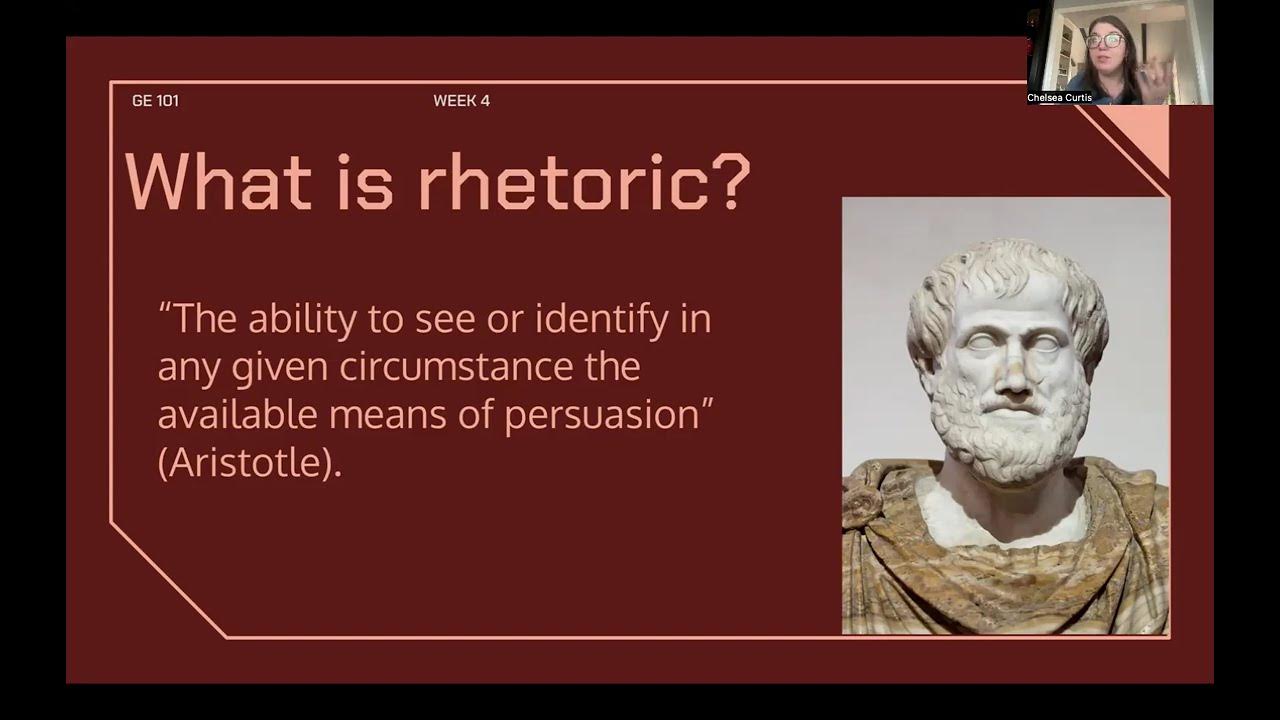Rhetorical appeals (ethos, pathos, logos, and kairos)
Summary
TLDRThis lesson focuses on rhetorical analysis, specifically the identification of rhetorical appeals: ethos, pathos, logos, and Kairos. The instructor explains each appeal using examples from advertising, politics, and public service announcements. Ethos pertains to credibility, pathos to emotions, logos to reason and logic, and Kairos to timing. The lesson emphasizes that rhetorical analysis is about identifying these appeals rather than evaluating the argument's quality.
Takeaways
- 📈 Rhetorical analysis involves understanding the strategic choices authors make to persuade their audience, known as rhetorical appeals.
- 🗣️ Ethos is an appeal to credibility, often associated with status, education, or experience, and can be used by politicians or celebrities to endorse products.
- 🎭 Pathos is an appeal to the audience's emotions, which can be positive or negative, and is often seen in ads aiming to evoke feelings like happiness or sadness.
- 📊 Logos is an appeal to reason, using facts, statistics, and logical arguments to persuade, such as in health claims on food packaging or in political discourse.
- 🕒 Kairos refers to the opportune moment, where the timing of a message can make it more persuasive, like Disney's Super Bowl commercials featuring recent players.
- 🤝 Credibility doesn't always require high status; it can be effective to connect with everyday citizens, as seen in political campaigns.
- 🌐 Ethos is commonly seen in politics and advertising, where credibility is leveraged to sell products or ideas.
- 🐶 Appeals to pathos can be very impactful in ads, like pet adoption campaigns that use sad imagery and music to tug at heartstrings.
- 📦 Logos can be identified through the use of quantifiable information, logical statements, and analogies in arguments.
- 🚫 Rhetorical analysis does not require the evaluator to judge the quality or accuracy of the argument, only to identify the appeals used.
- 🌎 Authors can use multiple rhetorical appeals simultaneously, as seen in a PSA about gun control that combines logos with pathos.
Q & A
What is the main focus of the lesson?
-The main focus of the lesson is to teach students how to identify and understand rhetorical appeals, specifically ethos, pathos, logos, and Kairos, as part of their rhetorical analysis for a major assignment.
What is an appeal to ethos?
-An appeal to ethos is a persuasion strategy that relies on the character or credibility of the speaker or the source. It can involve referencing a person's status, educational background, or professional experience to lend credibility to an argument.
Can you give an example of an appeal to ethos from the lesson?
-An example of an appeal to ethos given in the lesson is a politician on the campaign trail mentioning their humble upbringing to connect with the citizens and establish credibility.
What is an appeal to pathos?
-An appeal to pathos is a strategy that attempts to evoke emotions in the audience, such as happiness, love, fear, or sadness, to make an argument more persuasive.
How are appeals to pathos often used in advertisements?
-Appeals to pathos in advertisements might include sad music with images of lonely animals in pet adoption ads or images of joy and friendship to sell bubble gum, aiming to make the audience feel a certain way to influence their purchasing decisions.
What is an appeal to logos?
-An appeal to logos involves persuading an audience through reason, using facts, statistics, quantifiable information, or logical arguments like cause-and-effect statements or analogies.
Can you provide an example of an appeal to logos from the lesson?
-An example of an appeal to logos from the lesson is a Cheerios cereal box claiming that consuming the cereal can lower cholesterol by 4% in six weeks, using a specific statistic to persuade consumers.
What is an appeal to Kairos?
-An appeal to Kairos is when the author takes advantage of the timing or the event to make their argument more effective. It's about delivering a message at the most opportune moment.
How does Disney use an appeal to Kairos in their Super Bowl commercials?
-Disney uses an appeal to Kairos by airing commercials immediately after the Super Bowl ends, featuring the winning players. This capitalizes on the excitement and freshness of the event to promote their brand effectively.
What is the role of a student when conducting rhetorical analysis?
-When conducting rhetorical analysis, a student's role is to identify the rhetorical situation and the rhetorical appeals being used without evaluating the quality or correctness of the argument. They should be a neutral observer.
Can an author use multiple rhetorical appeals in a single document?
-Yes, authors can and often do use multiple rhetorical appeals simultaneously in a single document or advertisement. The lesson provides an example of a public service announcement that uses appeals to logos and pathos.
Outlines

This section is available to paid users only. Please upgrade to access this part.
Upgrade NowMindmap

This section is available to paid users only. Please upgrade to access this part.
Upgrade NowKeywords

This section is available to paid users only. Please upgrade to access this part.
Upgrade NowHighlights

This section is available to paid users only. Please upgrade to access this part.
Upgrade NowTranscripts

This section is available to paid users only. Please upgrade to access this part.
Upgrade Now5.0 / 5 (0 votes)





